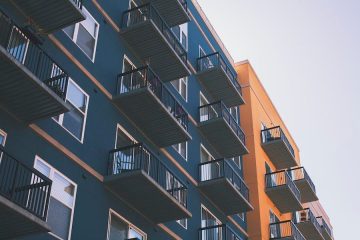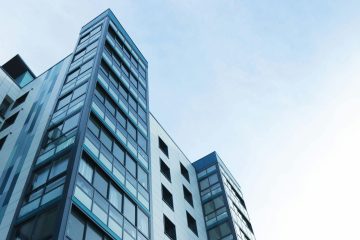As a building owner, are you prepared for the new energy efficiency standards under LL97? Understanding these LL97 regulations is crucial for your building’s future.
Compliance can seem overwhelming, but this guide breaks it down into simple steps. We will explore the key requirements and offer practical tips to help you navigate the process.
You’ll feel more assured about fulfilling your responsibilities and raising the efficiency of your building by the end of this essay. Let’s get started!
What LL97 Is
LL97 is a New York City law focused on reducing greenhouse gas emissions from buildings. It was enacted as part of the Climate Mobilization Act in 2019. The law sets specific emissions limits based on building type and size.
Under LL97, most large buildings must comply with emissions limits by 2024. These limits become stricter in 2030. Failure to meet these requirements may result in significant financial penalties for building owners.
Carbon Emissions Limits
Under LL97, emissions limits are clearly defined for different types of buildings. These limits are based on factors such as the building’s size and occupancy. Building owners should check which category their property falls into to understand the specific limits that apply.
The initial emissions limits take effect in 2024. By 2030, the limits will become even stricter. It is essential for building owners to plan for these upcoming changes to avoid penalties.
Affected Buildings
LL97 applies to a wide range of buildings in New York City. Specifically, it targets buildings that are 25,000 square feet or larger. Buildings that are part of an occupancy group subject to the law must comply with the emissions limits.
Residential and commercial buildings are both affected by this law. This includes hospitals, schools, and industrial facilities. Building owners should verify whether their properties meet the size and occupancy criteria outlined in LL97.
Compliance Deadlines
Building owners must be aware of the compliance deadlines set by LL97. The first deadline requires buildings to meet emissions limits by January 1, 2024. This is the date when the initial limits take effect.
After the 2024 deadline, buildings will face a stricter set of emissions limits starting January 1, 2030. It is important for building owners to prepare for these deadlines to avoid penalties. Keeping track of these dates is essential for compliance.
Penalties for Non-Compliance
Failure to comply with the emissions limits set by LL97 can lead to significant financial penalties for building owners. The fines are based on the extent to which a building exceeds its emissions limits. Building owners may face daily penalties that accumulate over time until compliance is achieved.
It is essential for building owners to understand these penalties to avoid financial consequences. Penalties can vary depending on the size and type of the building. Taking proactive steps to meet the emissions limits will help owners avoid these costly fines.
Building Retrofits and Improvements
Building retrofits and improvements are essential for compliance with LL97. These actions involve upgrading building systems to enhance energy efficiency. Common retrofits include installing better insulation, upgrading HVAC systems, and using energy-efficient lighting.
Implementing these improvements can help reduce a building’s greenhouse gas emissions. Building owners should conduct energy audits to identify areas that need attention. By making these changes, owners can better align their buildings with the required emissions limits.
Carbon Trading and Offsets
Carbon trading is a system that allows building owners to buy and sell carbon credits. These credits represent a reduction in greenhouse gas emissions. By participating in this market, owners can offset emissions that exceed the limits set by LL97.
Offsets can help buildings achieve compliance more effectively. Building owners can purchase offsets through various programs that support green projects. If you’re considering these options as part of your compliance plan, you should start understanding NYC local laws to ensure you navigate the complexities of these mechanisms correctly.
Energy Audits and Benchmarking
Energy audits are essential for identifying how much energy a building uses and where it can improve. These audits examine various aspects, including heating, cooling, lighting, and building envelope. By understanding energy consumption patterns, building owners can make informed decisions about necessary upgrades and improvements.
Benchmarking is the process of comparing a building’s energy performance against similar buildings. This practice helps building owners identify areas where they are performing well and areas that require attention. Tracking energy performance over time also allows owners to measure the effectiveness of their energy-saving measures.
Financing and Incentives
Building owners can access various financing options to support energy efficiency upgrades. These options might include low-interest loans, grants, or tax incentives aimed at improving building performance. It is important for owners to research these opportunities to find suitable financial support.
Incentives are available at both the city and state levels to encourage compliance with LL97. These programs can help offset the costs of necessary retrofits and improvements. By taking advantage of these incentives, building owners can ease the financial burden of meeting new energy efficiency standards.
Future Legislative Changes
Future legislative changes may further impact energy efficiency standards for buildings. These changes could introduce new compliance requirements and stricter emissions limits. Building owners should stay informed about potential legislation that may affect their properties.
It is essential for building owners to engage in ongoing education regarding energy regulations. They should monitor updates from local government and relevant agencies. Being proactive about legislative changes can help ensure that buildings remain compliant and avoid penalties.
Impact on Property Value and Marketability
Compliance with LL97 can influence property value in significant ways. Buildings that meet energy efficiency standards are often more attractive to potential buyers or tenants. This compliance can lead to increased marketability and potentially higher rental rates.
Non-compliance can have the opposite effect on property value. Buildings that fail to meet the emissions limits may face penalties. This situation can deter prospective buyers or tenants, impacting overall market interest.
Empower Every Building Owner To Conquer LL97 With Confidence
In conclusion, being a building owner comes with important responsibilities under LL97. Understanding the requirements is key to successful compliance. By taking proactive steps, you can enhance your building’s energy efficiency and avoid penalties. Remember, implementing upgrades can improve property value and marketability as well.
Stay informed about deadlines and available resources. Embracing these changes will not only benefit your building but also contribute positively to the environment. Take action today to ensure a sustainable future for your property.
Did you learn something new from this article? If so, be sure to check out our blog for more educational content.




